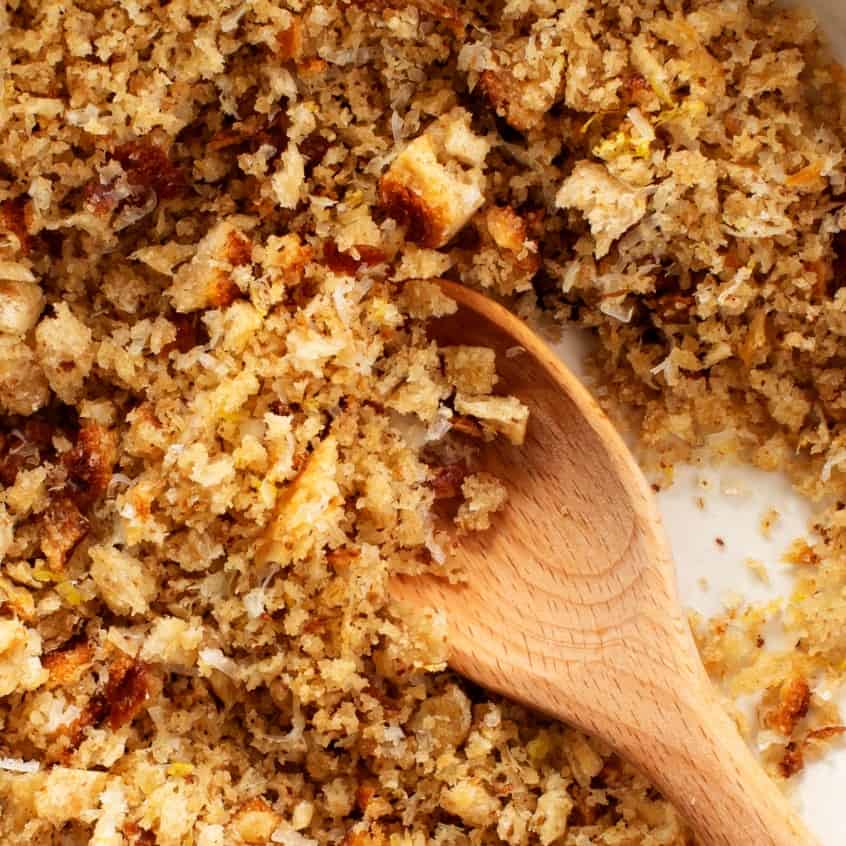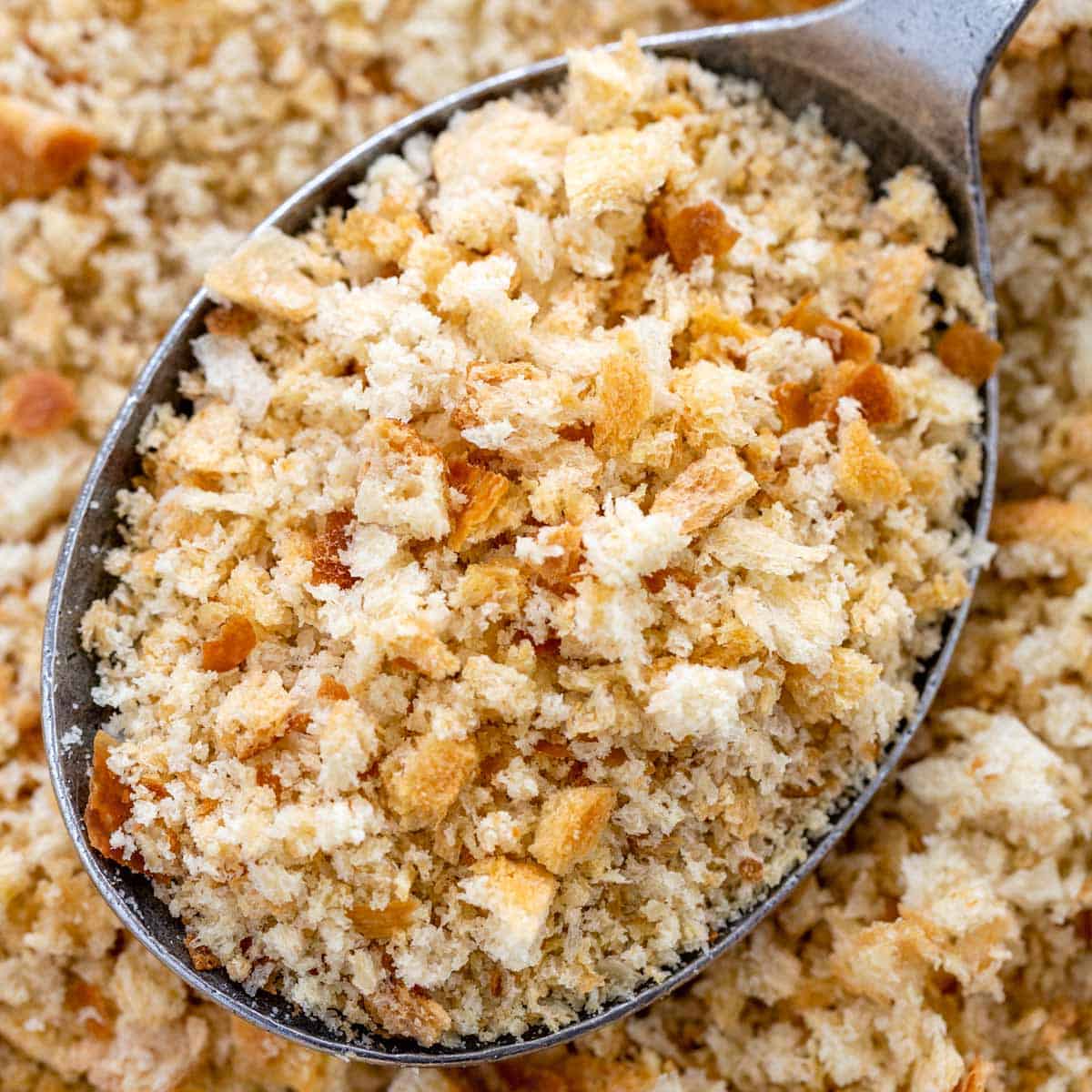Breadcrumbs are a staple ingredient in many dishes, ranging from breaded chicken to binding meatballs and topping casseroles. While many recipes call for a food processor to create that perfect crumb consistency, it’s entirely possible to make breadcrumbs without a food processor. This article will guide you through various methods, tips, and tricks to achieve the ideal breadcrumbs for your culinary creations. We will explore the materials you need, different techniques, and the versatility of breadcrumbs in your cooking.
Understanding Breadcrumbs
What Are Breadcrumbs?
Breadcrumbs are small pieces of dried bread that serve as a versatile cooking ingredient. They can be used as a coating for fried or baked foods, added to meat mixtures, or sprinkled on top of casseroles as a crunchy topping. Breadcrumbs come in various forms, including plain, seasoned, and panko (Japanese-style breadcrumbs). Each type can add a distinct texture and flavor to your dishes.
Types of Breadcrumbs
- Fresh Breadcrumbs: Made from fresh bread, they have a soft texture and moisture content, ideal for stuffing and binding.
- Dried Breadcrumbs: Made from stale bread, these breadcrumbs are dry and coarse. They absorb moisture well, making them suitable for topping and frying.
- Panko Breadcrumbs: A Japanese style, panko is coarser and lighter than traditional breadcrumbs, providing a unique crunch when baked or fried.
Understanding these types can help you choose the right method for making breadcrumbs without a food processor suited to your needs.
Choosing the Right Bread
You can make breadcrumbs from various types of bread, but the texture and flavor will differ based on your choice:
White Bread
White bread is commonly used for making breadcrumbs. Its soft, light texture breaks down easily into fine crumbs. Those who prefer a milder flavor for their dishes often opt for plain white bread.
Whole Wheat Bread
Whole wheat bread adds a nutty flavor and a coarser texture to the breadcrumbs. Use whole wheat bread if you want a healthier option with more fiber.
Sourdough Bread
Sourdough adds a tangy flavor to breadcrumbs, making it a great choice for specialty dishes. Its texture is more crusty, which may result in a slightly different crumb consistency.
Gluten-Free Bread
For those with gluten sensitivities, gluten-free bread can also be turned into breadcrumbs. Keep in mind that the texture may vary based on the specific brand, but it can be an excellent alternative.
Preparing the Bread
Drying the Bread
The first step to making breadcrumbs without a food processor is to ensure that your bread is dry. Fresh bread can make the process challenging, leading to a soggy consistency. Here’s how to dry out your bread:
- Air Drying: Cut the bread into slices or cubes and leave them out on a wire rack for a few hours or overnight. This method takes longer but retains the bread’s flavor.
- Oven Drying: Preheat your oven to a low temperature, around 250°F (120°C). Spread your sliced or cubed bread on a baking sheet in a single layer. Bake for 15-30 minutes, flipping the bread halfway through until it’s dry but not browned. Keep an eye on it to avoid overcooking, which can change the flavor.
Cooling the Bread
After drying, allow your bread to cool completely. Hot bread can create steam, leading to clumping and uneven breadcrumb sizes. Taking the time to cool ensures a better texture in the final product.
Methods for Making Breadcrumbs Without a Food Processor
Now that your bread is prepared, you are ready to make breadcrumbs without a food processor. Here are some effective methods:
1. Using a Rolling Pin
Step-by-Step Guide
- Place the Bread: Put the dried bread slices or cubes in a resealable plastic bag. Seal the bag, leaving some air inside for rolling.
- Roll it Out: Use a rolling pin to crush the bread. Apply moderate pressure and roll back and forth until you achieve the desired crumb size.
Advantages
This method allows you to control the breadcrumb size easily. You can create finer crumbs by applying more pressure or keep it coarser by using less.
2. Grating with a Box Grater
Step-by-Step Guide
- Choose Your Side: Select the coarse side of the box grater for larger crumbs or the fine side for smaller, finer crumbs.
- Grate the Bread: Hold the grater over a bowl and run the dried bread slices or cubes against the grater. You’ll collect the breadcrumbs in the bowl below.
Advantages
Grating is a quick method and allows for immediate visual feedback on the size of your crumbs, ensuring you can stop when you reach the consistency you like.
3. Crushing by Hand
Step-by-Step Guide
- Tear It Up: Using your hands, tear the dried bread into smaller pieces. This method is ideal for those who prefer a rustic, more uneven texture in their breadcrumbs.
- Continue Crushing: Once you have smaller chunks, continue pressing them with your fingers to create a crumbly texture.
Advantages
Crushing by hand gives you total control over the consistency, and it allows you to create larger breadcrumbs if desired.
4. Using a Mortar and Pestle
Step-by-Step Guide
- Add Bread to the Mortar: Break your dried bread into smaller pieces and place them in the mortar.
- Grind: Use the pestle to mash the bread down, rotating to break it down into smaller crumbs. This method is ideal for making small batches of breadcrumbs.
Advantages
This method provides a more controlled grinding process, allowing you to achieve a fine crumb.
5. Using a Ziploc Bag and Hammer
Step-by-Step Guide
- Bag It: Place the dried bread in a strong Ziploc bag and seal it tight, leaving air inside.
- Smash It: Use a meat hammer, mallet, or even a heavy pot to pound the bag gently. Turn and shake the bag to ensure even grinding.
Advantages
This method is not just effective but also a great stress reliever! Plus, it’s perfect for making larger batches without using extra dishes.
6. Using a Blender (without Food Processor)
If you have a regular blender, you can also use it to make breadcrumbs without a food processor. However, you must be cautious to not overload it.
Step-by-Step Guide
- Cut the Bread: Break the dried bread into smaller pieces or cubes so that they fit easily into the blender.
- Pulse Carefully: Use the pulse function to break the bread down into crumbs. Stop periodically to check the consistency and avoid overmixing.
Advantages
A blender can produce very fine crumbs quickly, but it requires more attention than other methods to avoid turning the bread into powder.
Flavoring Your Breadcrumbs
Adding Seasonings
You can elevate the flavor of your breadcrumbs by incorporating various seasonings:
- Herbs: Dried oregano, thyme, rosemary, or parsley can add an aromatic quality to your breadcrumbs.
- Garlic Powder: A sprinkle of garlic powder can bring out savory notes.
- Cheese: Grated Parmesan or pecorino can make seasoned breadcrumbs perfect for topping pasta dishes or casseroles.
Storage
Store your breadcrumbs in an airtight container. Homemade breadcrumbs can be kept in a cool, dry place for up to two weeks. For longer storage, consider keeping them in the freezer. This can extend their shelf life for several months, allowing you to have breadcrumbs on hand whenever needed.
 Applications of Breadcrumbs in Cooking
Applications of Breadcrumbs in Cooking
Breadcrumb Coating
One of the most common uses for breadcrumbs is as a coating for proteins like chicken, fish, or vegetables. They can create a crispy, golden crust when baked or fried.
Binding Agent
Breadcrumbs also serve as a binding agent in recipes for meatballs, meatloaf, or veggie burgers. They absorb moisture and help hold the ingredients together without altering flavors significantly.
Topping for Bakes or Casseroles
Breadcrumbs can act as a crunchy topping. When combined with butter and herbs, they can add texture and flavor to a variety of baked dishes, including casseroles, macaroni and cheese, or gratins.
Fillings and Stuffings
Incorporating breadcrumbs into stuffing mixtures for poultry or baked vegetables can add body and substance to the dish.
Pizza and Sandwiches
Sprinkle breadcrumbs on pizza or inside sandwiches for added crunch. They can also be mixed into salad for extra texture.
Conclusion
Making breadcrumbs without a food processor is not only achievable but can also be a fun and satisfying process. With various methods available—from using a rolling pin to hand crushing—you can easily create breadcrumbs to suit any recipe. The type of bread you choose, the way you prepare it, and adding personal flavors can elevate your dishes to new heights. Whether you’re baking, frying, or creating savory fillings, homemade breadcrumbs are an incredible addition to any kitchen. Now you know how to make breadcrumbs without a food processor, so get creative in your cooking!




